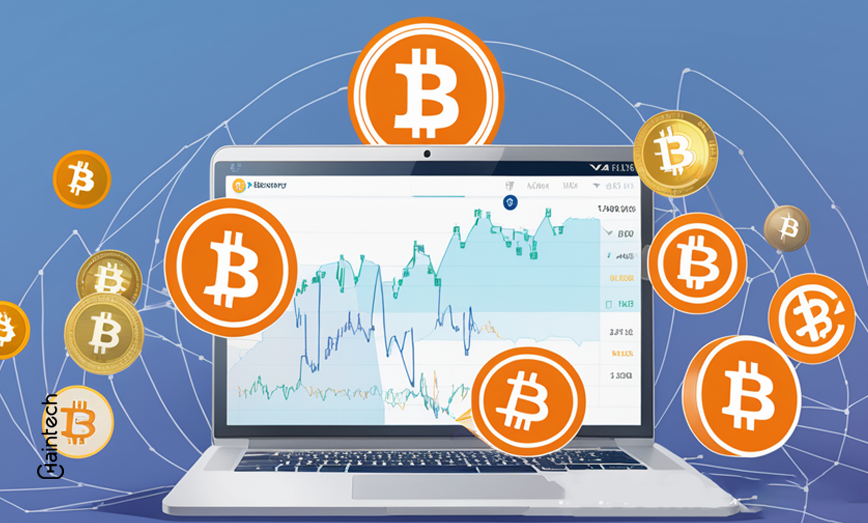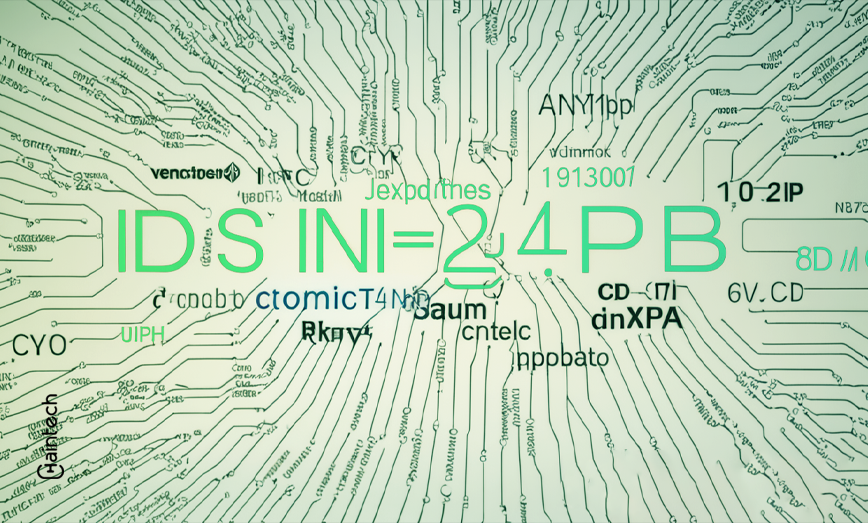The Transformative Potential of Blockchain in Capital Markets: An Exploration of Business Use Cases

The Intersection of Blockchain and Capital Markets
Imagine a bustling marketplace, teeming with people buying and selling goods. Now, turn that marketplace digital, and you land in the realm of capital markets. As we introduce blockchain in this space, things start getting very interesting, to say the least!
Basics of Blockchain Technology
Put simply, blockchain is like a digital ledger, but with some tricks up its sleeve. Picture it as a spreadsheet shared across a network of computers. Every time a transaction occurs, it’s recorded across everyone’s spreadsheet, making it near-impossible to tamper with.
Evolution and Growth of Blockchain
Born alongside Bitcoin in 2009, with a pseudonymous inventor (or inventors, who knows!), Satoshi Nakamoto, blockchain has come a long way. Initially tied closely to cryptocurrencies, the tech gained recognition as a game-changer in its own right. Major tech giants on the block, like IBM and Microsoft, didn’t take long to jump on this bandwagon.
Major Players in the Blockchain Arena
Talking blockchains and not mentioning Ethereum would be like baking a pizza and forgetting to add the cheese — it just wouldn’t be right! Considered the second generation of blockchains, Ethereum expanded the scope beyond mere financial transactions, introducing “smart contracts” into the mix. Other noteworthy players include Ripple, Chain, and Hyperledger, each carving its own niche in the vast blockchain canvas.
Overview of Capital Markets
The Role and Function of Capital Markets
Capital markets play cupid, matching corporations needing some dough to grow, with investors looking to park their money and earn returns. Two sub-markets, primary (where securities are created) and secondary (where they are traded), keep this affair exciting, unleashing a flurry of stock trades, bond sales, and futures contracts.
Key Participants in Capital Markets
It’s a lively party, folks! Issuers, investors, intermediaries like brokers, and regulatory bodies keep things moving (and interesting!). The ruckus they create often extends well beyond trading floors, impacting economies at large.
Trends and Challenges in Capital Markets
Cutting-edge tech, like AI, big data, and, you guessed it, blockchain, is redecorating the capital market landscape. But it isn’t all rainbows and unicorns. Slow clearing and settlement processes, transparency issues, and regulatory complications keep participants on their toes.
Introduction to Blockchain’s Role in Capital Markets
Brief Overview of Blockchain’s Application in Capital Markets
From streamlining operations to introducing transparency to even upending securities trading, blockchain is like that one multitasking coworker we all secretly envy. Although still early days, the promise blockchain holds for capital markets is tantalizing, to say the least.
Potential of Blockchain in Overcoming Capital Market Challenges
This is where it gets juicy. Imagine instantaneous, fully-transparent securities trades. Sound implausible? Well, with blockchain, it might just be around the corner.
Current Adoption and Integration of Blockchain in Capital Markets
While the race to full adoption is more of a marathon than a sprint, exciting strides are being made. Australian Securities Exchange (ASX) is betting big on blockchain to replace its existing clearing and settlement system, and JP Morgan launched its token, JPM Coin, to simplify its payment system. Talk about blazing the trail!
Streamlining Clearing and Settlements with Blockchain Technology
It’s time to tackle the ever-frustrating clearing and settlement processes. If you’ve ever waited days for your share purchases to be officially yours, you’re going to love this part.
Challenges in Clearing and Settlement Processes
Clearing and settlement might sound as simple as settling the bill after a dinner party, but trust me, it’s a tad more complex. It often involves a three-day timeframe (the infamous T+2 in financial parlance), and intermediaries like clearing houses and custodians.
Problems Associated with Existing Systems
For starters, transactions remain “unsettled” for days, leaving room for counterparties to default. Then there’s the rather convoluted process, involving multiple parties, each maintaining its own record. Let’s just say it’s begging for disruption.
The Financial Impact of Inefficiencies
Justice delayed is justice denied, and settlement delayed can be profit denied. Operational costs climb, capital requirements soar, and blockchain starts looking pretty tempting.
Impact of Blockchain on Clearing and Settlement
Use of Blockchain in Clearing and Settlement
Harnessing blockchain’s shared ledger prowess, participants can update transactions near-instantaneously. The result? Cut the clearing and settlement process from days down to minutes, or even seconds.
Benefits of Blockchains in Clearing and Settlement
Think lower operational costs, reduced counterparty risk, and simplified audit trails. In fact, Santander estimated that blockchain technology could reduce banks’ infrastructure costs related to cross-border payments, securities trading, and regulatory compliance by $15–20 billion per annum by 2025.
Examples of Blockchain Applications in Clearing and Settlement
ASX is on track to replace its current clearing and settlement system with a blockchain-based one. Stateside, Paxos Settlement Service has received SEC’s nod to operate a blockchain-based settlement platform. The future is starting to look blockchain-y.
Future Outlook for Blockchain in Clearing and Settlement
Future Potential of Blockchain in Clearing and Settlement
The future looks, dare we say, bright? Blockchain could redefine how market participants record, clear, and settle transactions. Heck, it could even render clearing houses obsolete.
Obstacles and Considerations for Blockchain Implementation
Sure, there will be bumps along the way. Regulatory uncertainty, tech standardization, and concerns about privacy and scalability all need addressing. But hey, that’s what makes it an exciting journey!
Steps towards Full Adoption
These are still early days. Dipping toes in sandbox environments, launching pilots, and forming consortiums can nudge the industry towards fuller adoption. Keep calm and blockchain on!
Enhancing Transparency in Capital Markets Through Blockchain
Who wouldn’t love a bit more transparency in capital markets? It’s like being able to see the chef prepare your meal — soothing for the soul and the stomach! Let’s dive into how blockchain can whip up a feast of transparency.
The Transparency Dilemma in Capital Markets
Think of transparency as the trusty glue that binds capital markets. It ensures fair play, helps evaluate risks, and builds investor confidence. In short, when transparency’s around, everyone sleeps a bit easier.
Current Transparency Issues
However, current systems leave a lot to be desired. Information asymmetry, opaque pricing mechanisms, and complex audit trails often play spoilsport. That’s one party we can all agree, could use a makeover.
Consequences of Limited Transparency
Limited transparency can lead to inaccurate risk assessments, encourage foul play, and ultimately, destabilize markets. Just ask anyone who lived through the 2008 financial crisis.
Blockchain’s Role in Boosting Transparency
How Blockchain Promotes Transparency
Blockchain can crank up the transparency volume a good few notches. Its shared, immutable records mean all transactions are made public, in real-time. It’s like donning a pair of glasses after years of squinting — you can finally see everything clearly!
Advantages of Increased Transparency from Blockchain
Increased transparency equals reduced fraud, improved risk assessment, and enhanced market efficiency. So, everyone from the regulator down to the individual investor reaps benefits. It’s a win-win all around!
Case Studies of Blockchain Enhancing Transparency
Take Everledger, for instance. It uses blockchain to track the provenance of diamonds, providing transparency across the supply chain. Or Circle’s USDC coin, which pairs the stablecoin with a regularly audited reserve of actual dollars, fostering trust through transparency.
Prospects of Increased Transparency Through Blockchain
Future Possibilities of Transparency with Blockchain
The future could look very different — a place where corporations issue shares on a blockchain, allowing for real-time shareholder voting. Or transparent supply chains discouraging unethical labor practices. The possibilities seem downright exciting!
Challenges of Implementing Blockchain for Transparency
Adopting blockchain isn’t as simple as flipping a switch. Privacy concerns, data standardization, and legislative hurdles stand as formidable speed bumps on the road to transparency.
Paths Towards Incorporating Blockchain for Transparency
Understanding and mitigating these challenges, through regulatory efforts, tech developments, and sector-wide collaboration, can help guide us toward a more transparent future. If we navigate smartly, the transparent world we described earlier can become our reality. No kidding!
Blockchain’s Implication on Securities Trading and Issuance
Let’s step into the shoes of brokers and issuing corporations, as we explore the world of securities trading and issuance. Warning: this might squirm the traditionalists out there!
Current State of Securities Trading and Issuance
Securities trading involves a dance between brokers, stock exchanges, and clearing houses. Issuance, on the other hand, is a tango with underwriters and regulatory authorities. To put it succinctly, it ain’t easy!
Issues and Pain Points in the Current Process
This traditional process often leads to considerable lag in deal completion, costly intermediaries, and operational complexities. It’s like running a relay race with multiple baton exchanges — tedious and time-consuming.
Impacts of those Pain Points
Adding insult to injury, these issues open up room for counterparty default, expensive manual reconciliations, and limited trading periods.
Blockchain in the World of Securities Trading and Issuance
Applying Blockchain to Securities Trading and Issuance
Enter Blockchain. With its ability to execute and validate transactions in real-time, the technology has the potential to transform this landscape, making it faster, cheaper, and way cooler.
Potential Benefits of Blockchain in Securities Trading and Issuance
Imagine instant trades, anytime, anywhere, or issuing shares at a fraction of current costs, with automated compliance. That’s the kind of party blockchain can throw in securities trading and issuance.
Real-World Implementations of Blockchain in Securities Trading and Issuance
Already, we’re seeing the likes of Nivaura issuing bonds on Ethereum network and German company Bitbond launching blockchain-based bonds. It’s not science fiction, folks — it’s happening!
Future of Securities Trading and Issuance with Blockchain
Potential Future Scenarios with Blockchain
In the future, blockchain could do away with brokers and clearing houses, ushering in peer-to-peer transactions instead. Improved access to investment opportunities, thanks to “fractional ownership,” might be another game-changer on the horizon.
Hurdles in Applying Blockchain in Securities Trading and Issuance
Let’s not get ahead of ourselves. Regulatory uncertainties, scalability issues, and technological complexities still loom large. There’s no denying it — it’s a bumpy ride.
Strategies for Blockchain Adoption in Securities Trading and Issuance
But, don’t lose hope. Regulators and industry can work together to overcome these hurdles. Sandbox environments and consortiums could pave the way for blockchain application.
Regulatory Considerations for Blockchain’s Use in Capital Markets
Are you one of those folks who suddenly remember the rules when you step into an “unregulated” dodgeball game? Then, this section on regulatory considerations is for you!
Current Regulatory Environment for Blockchain in Capital Markets
While blockchain offers myriad opportunities, it also lands us in uncharted regulatory territory. Think of it as trying to fit a round peg (blockchain) into a square hole (traditional finance regulation). It’s no walk in the park!
Regulatory Challenges for Blockchain
From questions over node operation regulations to legal status of digital assets, the blockchain world is filled with regulatory puzzles, enough to give even the savviest lawmakers a migraine.
The Impact of Regulations on Blockchain’s Use in Capital Markets
Uncertainty can hamper innovation, deter investment, and slow down adoption. The takeaway? To unleash blockchain’s full potential, it needs a regulatory framework that offers clarity and consistency.
Looking Ahead: Future Regulatory Possibilities for Blockchain
Potential Changes to Regulations
As our understanding of blockchain deepens, we might see bespoke regulatory frameworks crafted around blockchain and digital assets. The focus is likely to be on protecting investors, ensuring market integrity, and hedging systemic risks.
Regulatory Barriers to Future Blockchain Use
The race is on, but the biggest regulatory hurdles — international coordination, digital identity authentication, and privacy considerations — still stand stubbornly in the path.
The Role of Regulatory Bodies in Encouraging Blockchain Adoption
Regulators have a crucial role to play. They need to foster an environment for blockchain’s growth, while managing its risks. How? Through learning forums, regulatory sandboxes, and embracing dialogue with industry pioneers.
Directions for Blockchain and Regulation Harmony
Moving Towards Blockchain-Friendly Regulation
Striking a balance between innovation and regulation will be key, and it involves a nuanced understanding of blockchain’s risks and rewards.
How Regulation Can Foster Trust in Blockchain Solutions
People tend to be wary of the unfamiliar, and that includes blockchain. Thoughtful regulation can help debunk myths, foster public trust, and inspire widespread adoption.
Case Studies of Effective Regulation and Blockchain Integration
Take Wyoming, for instance. The state has pioneered blockchain-friendly laws, spurring a flurry of crypto startups. And look at Estonia’s e-residency program, leveraging blockchain for government services, paving the way for a digital society!
Conclusion
Well, what a ride it’s been, folks! We’ve journeyed through the coming together of blockchain and capital markets, like two long-lost friends having a reunion.
From streamlining clearing and settlements to promoting transparency to the potential transformation of securities trading — blockchain has the potential to play a leading role in the future of capital markets.
Over the long haul, blockchain could redefine capital markets, making them more efficient, transparent, and inclusive. Once fully harnessed, the technology presents opportunities for innovation that we are only starting to comprehend.
There are still hurdles to be navigated: regulatory ambiguity, scalability concerns, and lack of standardization, to name a few. Overcoming these will require patience, experimentation, and multi-sector collaboration. But one thing’s for certain, it’s going to be one thrilling adventure!










uk